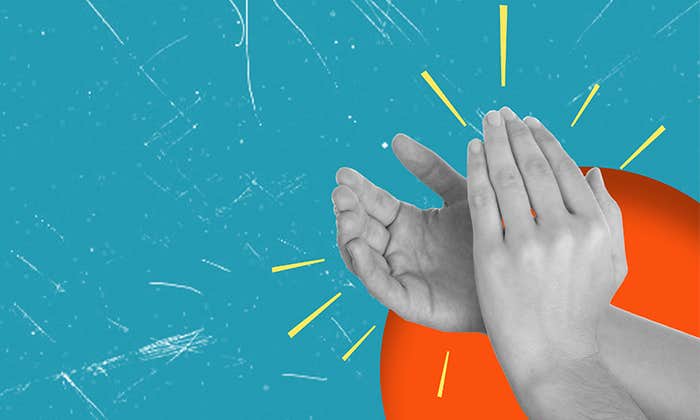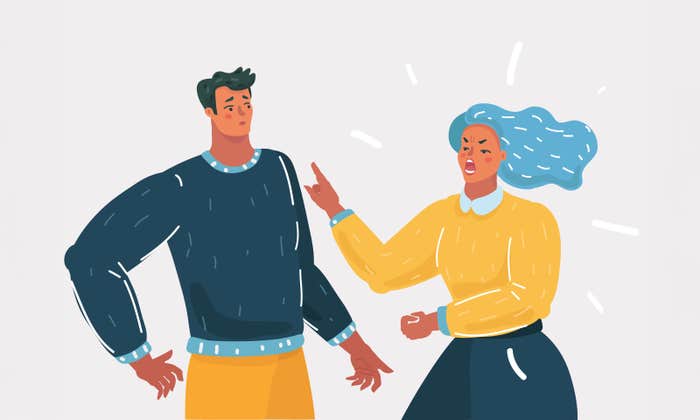The use of emojis has become a global phenomenon. By 2015, over 6 billion emojis1 were being sent every day by over 90 percent of the world’s online population.2 Emoji, today, dwarfs even the reach of English.
For some, emojis are prompting warnings about the death of real language. Professional art critic and contrarian Jonathan Jones, writing in The Guardian newspaper in 2015, contended that “After millennia of painful improvement, from illiteracy to Shakespeare and beyond, humanity is rushing to throw it all away.” Emoji is, he proclaimed, a “huge step back for humanity.” His derision is clear: “Use emoji if you want to, I’ll stick to the language of Shakespeare.”
But is language really the prime mover and shaker in our everyday world of communication?
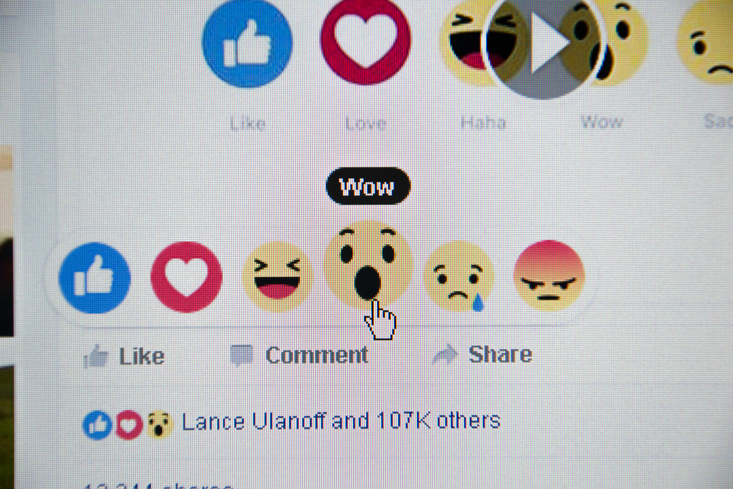
Take the quotidian, face-to-face interaction, when we gossip, pass the time of day, or otherwise engage in idle banter—on one estimate as much as 70 percent of our daily interactions are spent in this way. While these exchanges doubtless involve language—the words that we utter, in some semblance of grammatical order—they also involve a specific mode of delivery: speech. Yet spoken language lacks the white spaces, on the written page, that help us decipher where one word begins and another ends; also absent are the punctuation marks and other niceties of the writer’s handbook, that enable us to tell how the words are being marshaled into groups of ideas: clauses and sentences.
In speech we have, instead, prosody: features of stress, pitch, volume, pauses, and accelerations and decelerations; it is these that enable us to interpret a verbal stream as comprising distinct words and intonation units. Rhythm and meter provide cues as to how information is being organized. And the rise or fall of a speaker’s intonation helps us figure out whether “You’re not from around here,” is a question, or telling us to get lost. There are other modes too: eye-gaze, facial expression, gestures, and other features of “body language.”
On one estimate, only 30-35 percent of the social dimensions of meaning, in our daily interactions with others, come from language, with up to a staggering 70 percent deriving from nonverbal cues. This includes visual cues such as the other person’s body language, facial expression, and gestures, as well as how close they stand to us—we’ve all experienced the discomfort of the individual who occupies too much of our personal space for comfort; our emotional response is, invariably, likely to be negative. We also respond to their physical appearance, their dress, and the environment in which we encounter them, which provides information about their occupation or mode of living.
Digital text alone is impoverished and, on occasion, emotionally arid.
We also draw information from touch—I once knew a successful businessman who claimed to be able to tell how reliable a potential partner or client was from how they shook his hand. Grip strength, the feel of the other’s palm, and the other actions associated with nothing more complex than a handshake may provide all we believe we need to make far-reaching conclusions about a potential business partnership.
But is there any truth to this anecdote? According to research, there really is: The strength of our handshake gives away telltale signs about our personality. In one of the first studies of its kind, researchers investigated the relationship between handshake strength and personality. In the study, 112 subjects shook hands with four trained coders—twice with each coder—in order to assess grip strength of the handshake. The subjects also completed assessments of personality traits. The research found that a strong handshake, across both sexes, correlates with being an extrovert and emotionally expressive. In contrast, a weak handshake tends to correlate with introversion, and being less emotionally expressive.
We also derive information from observing self-touch: Someone touching their hair might be bored, or perhaps even signaling romantic interest. And we glean information from how others manage temporal passage in our interactions with them—time between turns in an exchange—as well as eye contact, pupil dilation—especially in assessing the likelihood of potential romantic encounters—and even blink rate.
All these dimensions of nonverbal communication were studied by the late American anthropologist Ray Birdwhistell, a pioneering figure in research on nonverbal communication. He founded the field of kinesics, as he dubbed it, which involved the study of the role of “facial expression, gestures, posture, and gait, and visible arm and body movements” in conveying social meaning. Based on extensive research, Birdwhistell estimated that we may be able to both produce and recognize as many as 250,000 distinct facial expressions; viewed through this lens, it is perhaps no accident that emoji, with its bewildering array of yellow faces ranging from the various permutations on a smile through to the various confused, unamused, sad, and angry faces, are so apt for visual communication in textspeak.
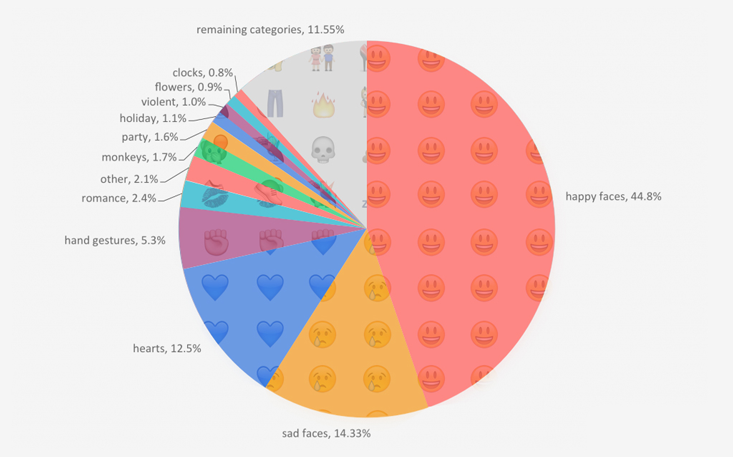
The other dimension of nonverbal communication involves paralinguistic features of speech, first studied by American linguist George Trager. Paralinguistics is the study of the features that accompany spoken language, a consequence of its medium of production; this can influence, and even alter, the meaning of the words we utter. Paralinguistic features, as intimated above, range from vocal signals, such as laughter, to speech prosody. Prosodic features include rhythm, relative volume, pitch, intonation, and the pitch range the voice operates in—higher for women, on average, than men.
As a significant proportion of the meaning of a communicative message in social interaction derives from nonverbal cues, it stands to reason that text alone—the linguistic mode—conveys only a relatively small proportion of the information we have access to, in spoken exchanges. There’s a gaping lacuna in what digital talk, alone, can convey. Much of the information relating to emotional expression, projection of personality, the nuancing that accompanies words in spoken language, is missing. It’s hardly surprising, therefore, that we can all, on occasion, fall foul of the angry jerk phenomenon: A rushed email, or a casual SMS can sound detached, snotty, or worse. It lacks the nonverbal cues that fill out and complement our face-to-face interactions. As the usual resources that allow our empathy to get off the ground are missing, we’re at an immediate disadvantage in trying to put ourselves in the sender’s shoes.
The rich, communicative context available in face-to-face encounters is largely absent from digital communication. Digital text alone is impoverished and, on occasion, emotionally arid. Textspeak, seemingly, possesses the power to strip all forms of nuanced expression from even the best of us. But here emoji can help: It fulfills a similar function in digital communication to gesture, body language, and intonation in spoken interaction. Emoji, in text messaging and other forms of digital communication, enables us to better express tone and provide emotional cues; and this enables us to better manage the ongoing flow of information, and to interpret what the words are meant to convey.
In fact, the idea that digital text, used alone, sucks away the nuancing has even been given its own name: Poe’s law. Based on comments made originally by Nathan Poe on how to parody fundamentalist views, Poe’s law is now an Internet adage, widely cited on web forums and chat rooms; it even has its own Wikipedia page. According to the British newspaper The Daily Telegraph, Poe’s law states the following: “Without a winking smiley or other blatant display of humour, it is impossible to create a parody of fundamentalism that someone won’t mistake for the real thing.” In short, when poking fun in digital communication, emojis are best used for avoidance of doubt.
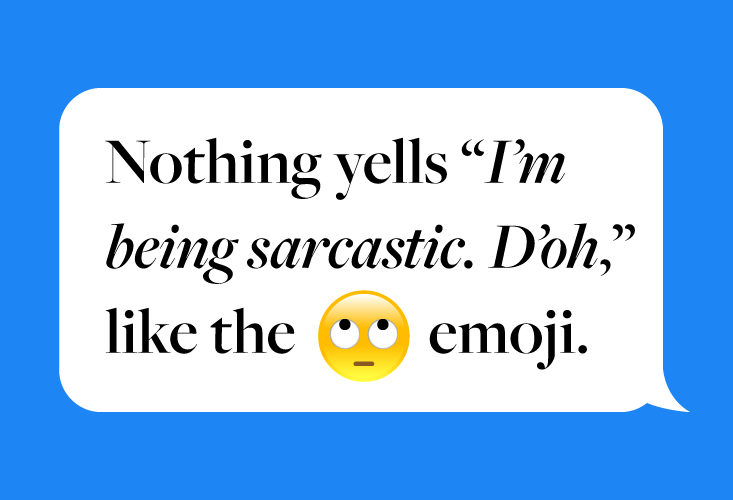
It is no fluke, therefore, that I have found, in research on emoji usage in the United Kingdom that I conducted on behalf of TalkTalk Mobile, that 72 percent of British 18- to 25-year-olds believe that emoji makes them better at expressing their feelings. Far from leading to a drop in standards, emoji is enabling people—especially the young—to become better communicators in their digital lives. The advent of emoji can be seen, from this perspective, as empowering, a force for good in 21st-century communication.
A case in point is research commissioned by the dating site Match.com in the United States. In the fifth annual Singles in America report, researchers investigated the relationship between emoji usage and sexual conquests—the first survey of its kind to do so. The survey polled over 5,600 singles—all non-Match.com subscribers—whose socio-economic and ethnic profiles were representative of the national population. And results were striking: The more emojis a singleton uses in their digital communication, the more dates they get to go on; further, the more sex they have. A striking 54 percent of those who used emoji had sex, compared with 31 percent that didn’t. Even more striking: For women, emoji usage correlates with sexual satisfaction. The finding was that female singletons that use kiss-themed emojis have more orgasms than other women.
Emoji users are more effective communicators.
Clearly, and as any psychologist worth their salt will warn us: Correlation doesn’t entail causation. Finding that two things seem to go together doesn’t mean one causes the other. You can’t simply start using emoji in your text messaging and expect to start being invited out on more dates (if only!). Rather, emoji usage is indicative of something else. Using emoji enables your potential date to better gauge your message: Emoji facilitates a better calibration and expression of our emotions in digital communication. Helen Fisher, a biological anthropologist at Rutgers University and Chief Scientific Advisor to Match’s annual Singles in America survey, commented as follows on these findings: “Here we have a new technology that absolutely jeopardizes your ability to express your emotion … there is no more subtle inflection of the voice … and so we have created another way to express emotions and that is the emoji.”
In essence, it is not emoji usage per se that gets you more dates: Rather, emoji users are more effective communicators. Their messages have more personality, and better convey the emotional intent of the text message. In turn, this leads to greater emotional resonance in the recipient.
In general terms, the predominant global usage of emoji does relate to emotions. In a survey conducted by London-based software developer SwiftKey media, over 1 billion items of text-based data were analyzed from users spread across 16 different languages. Interestingly, the top three emoji categories all directly related to emotional expression.3 Happy faces, which include winks, kisses, smiles, and grins, accounted for 45 percent of all emoji usage. Sad faces (including angry faces) made up 14 percent of all usage. Heart emojis—of all colors, including the broken heart emoji—made up 12.5 percent of usage. Over 70 percent of emoji usage directly relates to emotional expression of some kind. This finding resonates with my own research that shows emoji to be a powerful means of expressing emotion, which, users report, enables them to better connect with others in digital communication.
While emojis can substitute for words in our digital messages, a delicate hand is nevertheless required in how we choose to use emoji. In discussing the etiquette of emoji and dating, one 20-something, writing in The Thought Catalog, reports how the rush to using emoji can be as bad for your dating prospects as turning up late, or talking about your ex on the first date:
A guy once asked me out with almost nothing but emoji, which was cute and all, but I was a little turned off because what would happen when we had to rely on words instead of characters? It was a tough call: I didn’t want to ruin my chance with a fun-loving and carefree guy all over a couple of symbols, but his excessive use tore apart the first impression that I had had of him. He had rushed into the emoji relationship.
Enough said!
Vyvyan Evans is an expert on language and communication. He’s published 14 books on language, meaning, and mind, including The Crucible of Language: How Language and Mind Create Meaning. His writing has been featured in The Guardian, Newsweek, New Scientist, and Psychology Today, among other publications.
Excerpted from The Emoji Code: The Linguistics Behind Smiley Faces and Scaredy Cats by Vyvyan Evans, to be published on Aug. 1, 2017 by Picador. Copyright © 2017 by Vyvyan Evans. All rights reserved.
CAUTION: Users are warned that the Work appearing herein is protected under copyright laws and reproduction of the text, in any form for distribution is strictly prohibited. The right to reproduce or transfer the Work via any medium must be secured with the copyright owner.
References
1. Who Needs Words When You Have Emoji? eMarketer.com (2015).
2. Shaul, B. Report: 92% of Online Consumers Use Emoji. Adweek.com (2015).
3. Swiftkey Emoji Report: Most-used emoji revealed: Americans love skulls, Brazilians love cats, the French love hearts. Blog/swiftkey.com (2015).
Sergey Novikov / Shutterstock





















